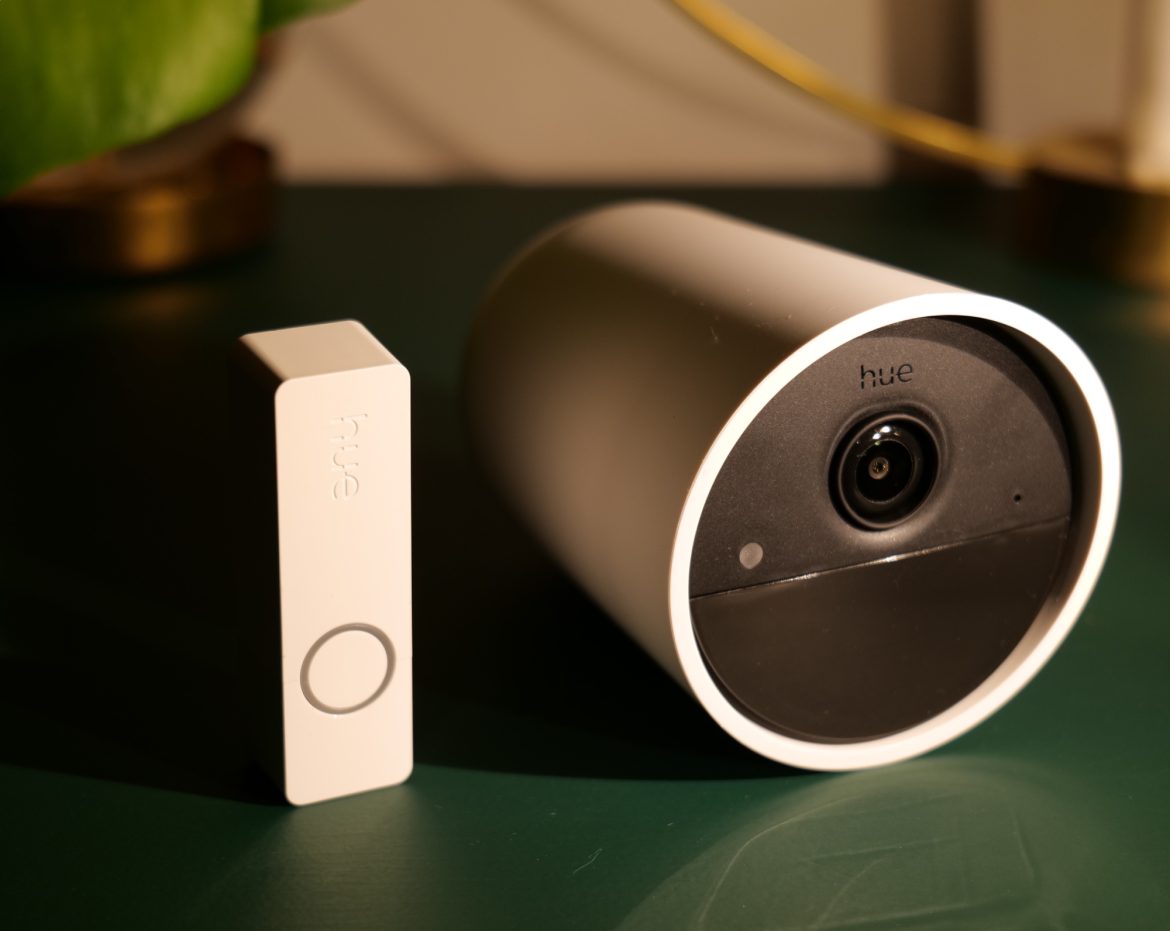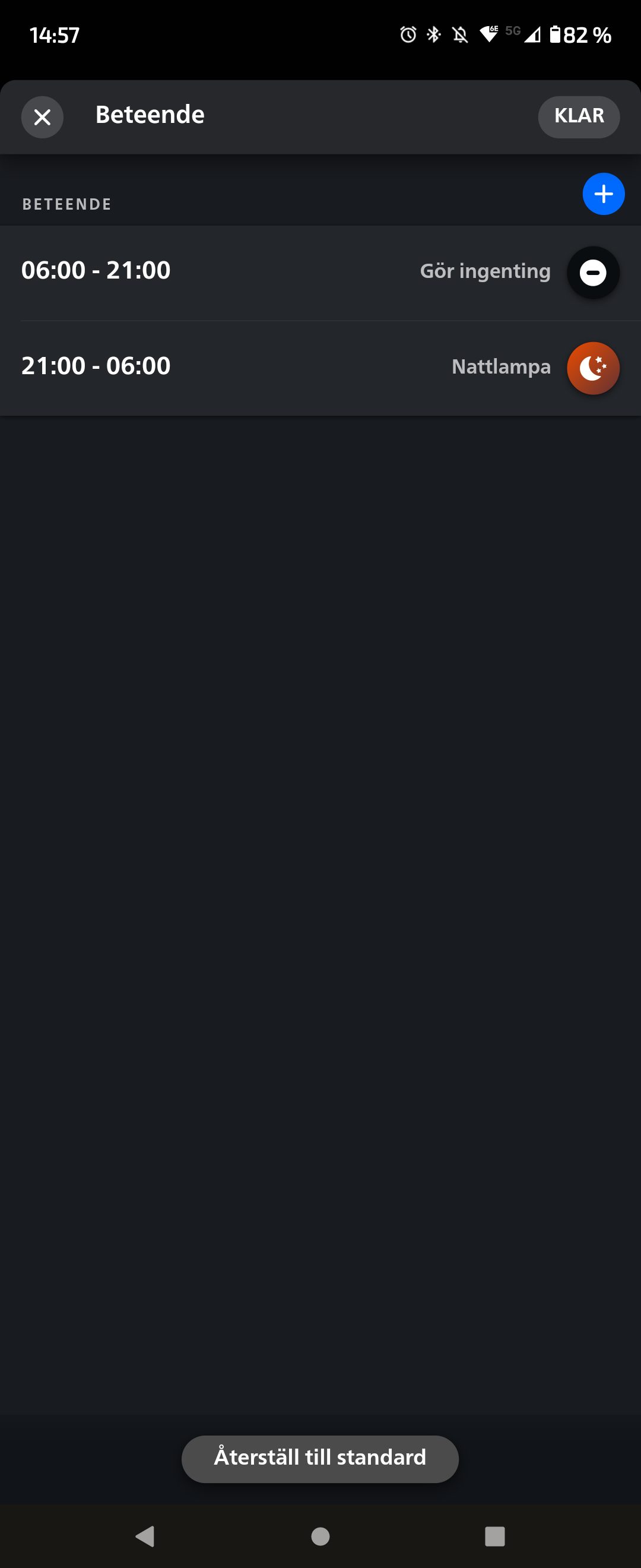TL;DR
Philips Hue is expanding beyond smart lighting into home security with a new camera and contact sensor. While the contact sensor is a seamless and valuable addition for automating lights, the battery-powered 1080p camera presents mixed results. Its integration with the Hue ecosystem is a major plus, offering unique deterrence through synchronized lighting and siren actions. However, concerns include its susceptibility to theft, charging port weather resistance, the relatively low 1080p resolution compared to competitors, and a subscription model for key features like video storage and object recognition that drives up the total cost. Explore the full review to see if this new security venture fits your smart home needs.
Philips Hue has become synonymous with sophisticated, high-performance smart home lighting solutions. The platform offers extensive control over individual lights, rooms, or zones through Google Assistant, Alexa, or Siri, as well as location-based automation (geo-fencing) that activates lighting as you approach your home. The system is feature-rich and remarkably easy to manage.
This year, Philips Hue users were prompted to create an account for their systems, a move likely intended to enhance security by associating devices and systems with specific users. This focus on security is further evidenced by Philips Hue’s recent expansion into home security products, including their first security camera and a door sensor. We evaluated a package featuring the Philips Hue Secure Camera and the Philips Hue Contact Sensor. This combination offers complementary functionality, enabling diverse control methods and system interactions.
Join us as we explore Philips Hue’s latest venture into the security sector, characterized by its extensive configuration options.
An Overview
Philips Hue Secure Camera
The security camera features 1080p resolution and is battery-powered. Battery life is rated at approximately two to three weeks under heavy usage with frequent setting adjustments (as experienced during our testing). Under optimal conditions and with specific settings, the camera is advertised to achieve up to three months of battery life, though we were unable to confirm this claim during our shorter test period. The camera is magnetically mounted to a base that is screwed into the desired location. In our test environment, pairing the camera with our existing Philips Hue Bridge (a requirement for communication with other Philips Hue accessories) proved relatively straightforward, though not quite as seamless as pairing Philips Hue smart lights or switches. After a few attempts, the camera connected and displayed a 141.2-degree field of view in its fish-eye format.
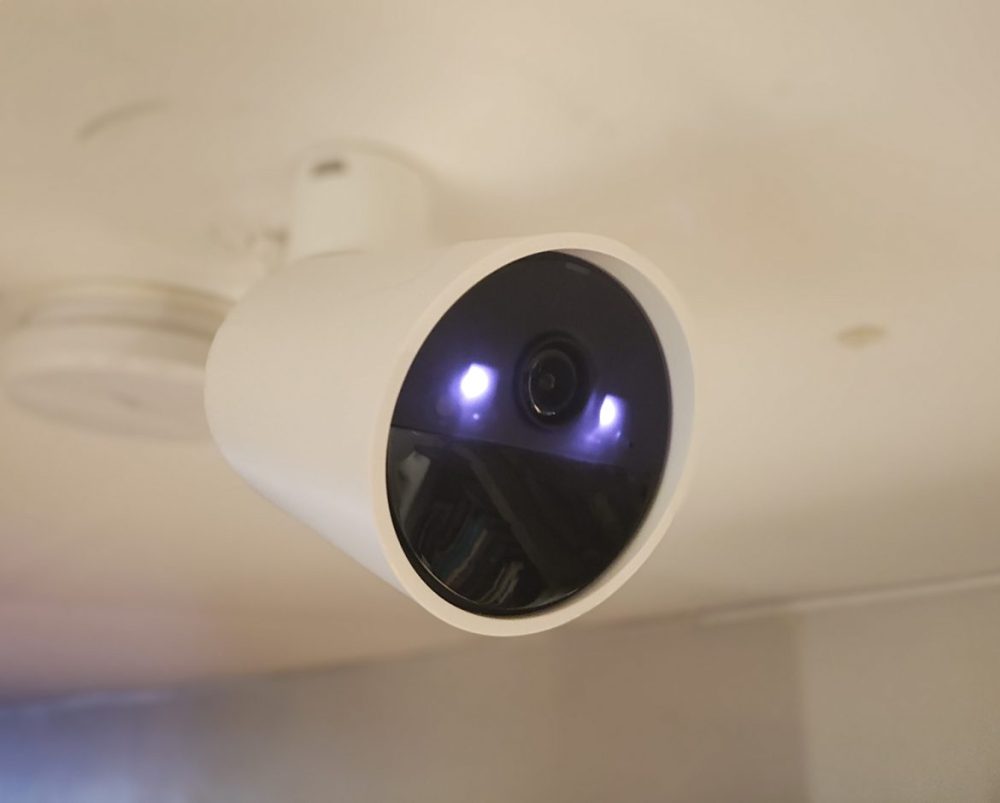
Philips Hue Contact Sensor
In contrast, the door sensor paired effortlessly within seconds, consistent with the typical Philips Hue experience. The sensor can be mounted using either the included adhesive tape or screws. Providing both options is a thoughtful design choice, acknowledging that drilling into certain door types may be undesirable or impractical. The magnetic backing of the sensor further enhances installation flexibility, often rendering the adhesive tape unnecessary. These features combine to ensure secure and reliable mounting.
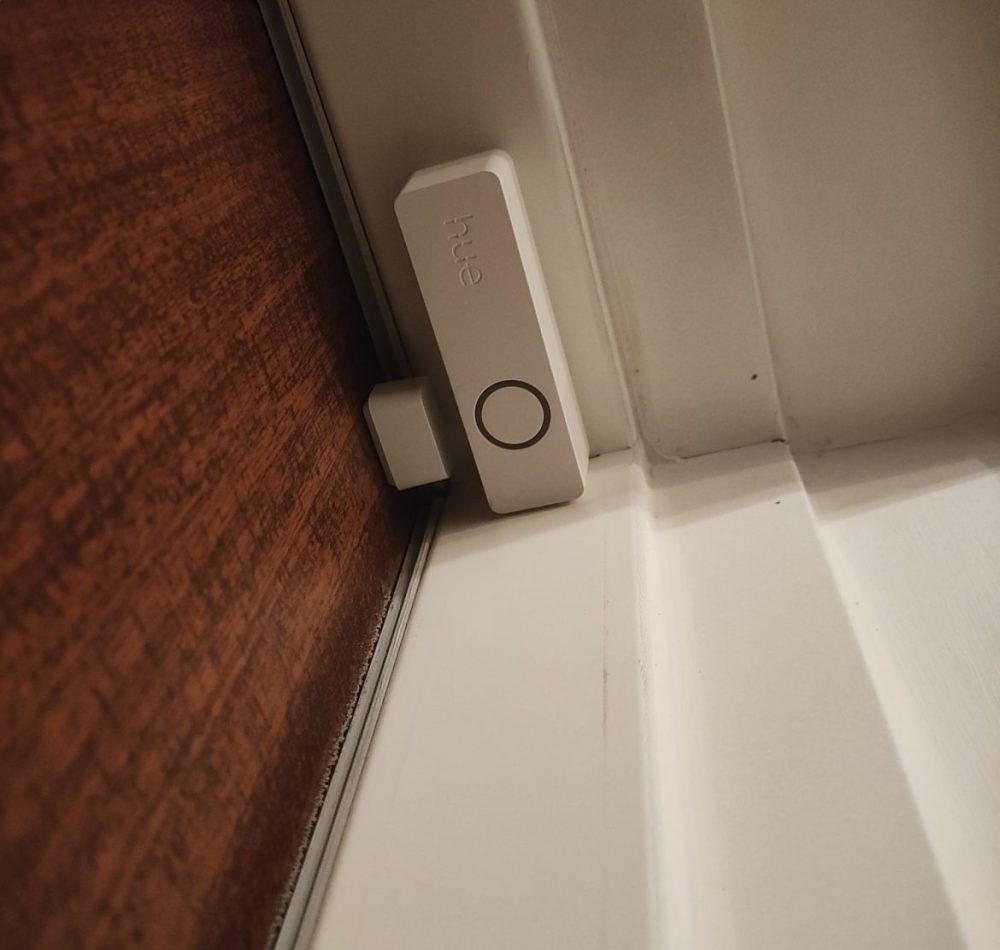
Areas of Use
Philips Hue Secure Camera
The camera is suitable for both indoor and outdoor use, offering a comprehensive suite of customizable settings. The primary functions revolve around sending alerts and triggering lighting actions based on detected motion. The camera incorporates a siren, which, while not exceptionally loud, proves effective and disruptive when combined with the Activate action feature.
The Activate action feature provides distinct modes for “Home” and “Away” scenarios. Users can define specific actions for each mode to be executed upon motion detection. When the system is in “Away” mode, a suitable action might involve flashing all lights red and activating the siren to deter potential intruders. The key advantage here is the amplified deterrent effect achieved by creating a highly visible disturbance that alerts neighbors and draws attention to the property. This can be further enhanced by integrating outdoor lighting, such as balcony lights or mounted fixtures, which are more difficult to disable. The overall impact is directly proportional to the number of lights connected to the system. Conversely, in “Home” mode, the action might involve flashing specific zones or lights to signal to an unauthorized person that their presence has been detected.
The Activate action feature requires manual activation, a deliberate design choice to prevent false alarms triggered by expected events like mail delivery.
Beyond the Activate action, motion detection can be used to define time-based lighting behaviors. For example, a dim light could be configured to activate in the hallway for three minutes between 10:00 PM and 7:00 AM. The camera also offers two-way communication, customizable privacy zones, and a range of other configurable functions.
Philips Hue Contact Sensor
The contact sensor offers a simple yet effective solution. It provides a log of door openings and closings, and can be configured to trigger lighting actions, such as turning on a hallway light for a specified duration or maintaining its previous state.
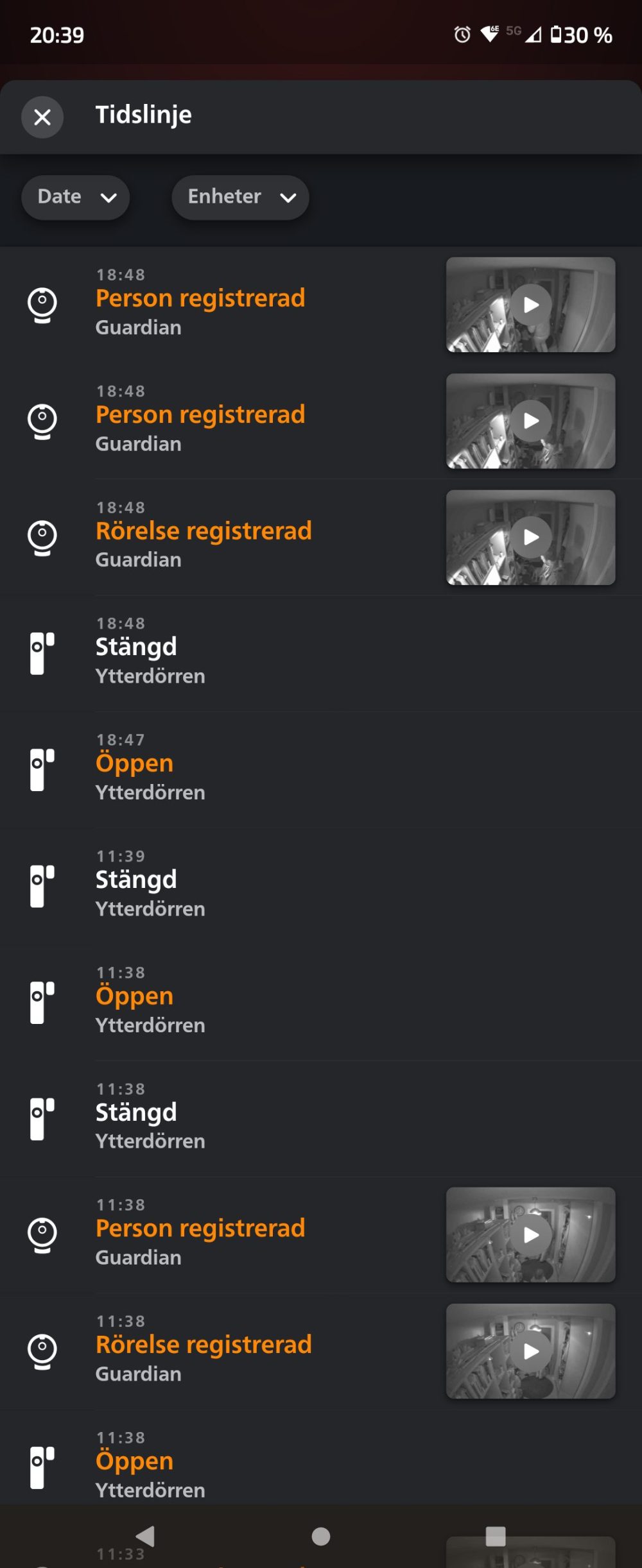
What we like about the Philips Hue Secure Camera
The flexible mounting system expands the camera’s utility. Users can easily relocate the camera to different locations by acquiring additional mounts. For instance, some members of our team found the camera particularly useful for remote monitoring of kitchen appliances, such as the stove. In moments of stress, when leaving the house, it’s easy to second-guess whether the stove was left on. With the camera, a quick check provides peace of mind and eliminates the need for a return trip.
The battery-powered operation and end-to-end encryption are significant advantages. However, its seamless integration into the Philips Hue ecosystem via the Philips Hue Bridge is its most compelling feature. The Philips Hue Bridge allows users to integrate devices like IKEA Trådfri lamps and control them via the same app, enhancing the overall smart home experience.
What we don’t like about the Philips Hue Secure Camera
The camera’s portability, while advantageous, also presents a security vulnerability, making it susceptible to theft. Placing the camera in a high, inaccessible outdoor location mitigates this risk but potentially negates the benefits of its battery-powered design, as a wired connection would then be preferable. While the camera is weatherproof, the charging contact is not entirely resistant to the elements, limiting placement options. Indoor placement, on the other hand, exposes the camera to potential theft.
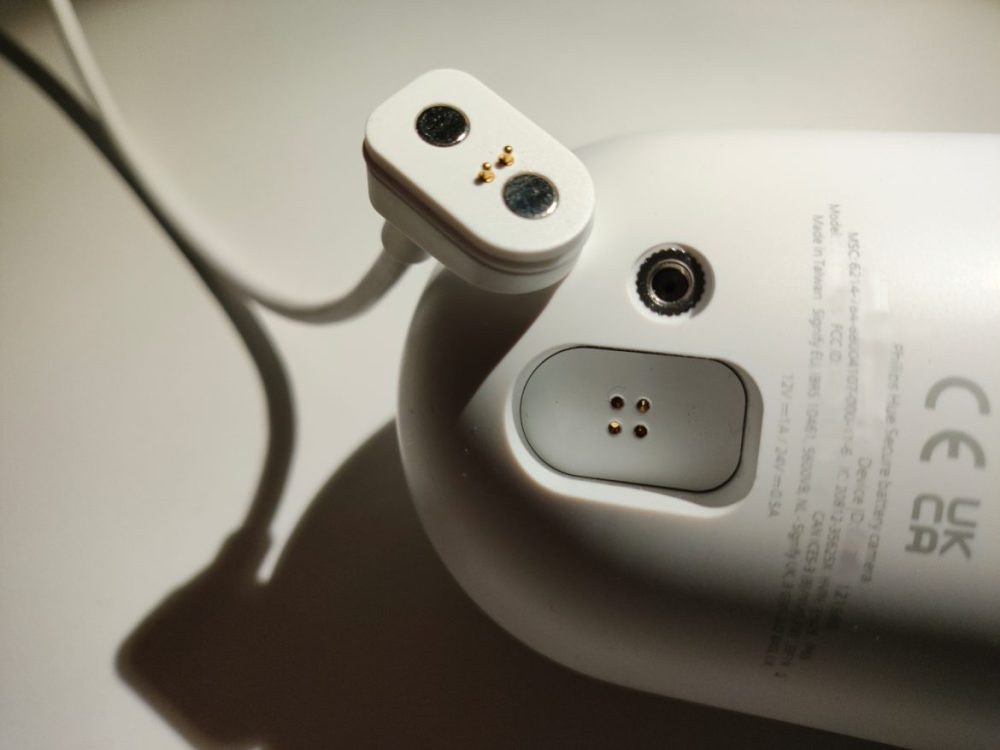
The 1080p resolution is also a point of concern. Competitors offer higher resolutions, such as 4K, which are crucial for detailed monitoring and effective zooming.
From a user experience perspective, navigating the menus and configuring settings can be somewhat convoluted. The system’s extensive flexibility comes at the cost of complexity. However, it is important to note that the Philips Hue Secure Camera is a relatively new product and is likely to undergo functional improvements in future iterations. Philips Hue’s lighting system serves as a prime example of user-centric design, and we anticipate that the Secure system will evolve in a similar direction.
The pricing structure is also a concern. The camera itself has an initial cost of approximately 2,700 SEK. Furthermore, many features are only accessible through subscription options. The free tier does not include video storage or AI-powered object recognition (packages, people, animals, and vehicles). These features require a subscription of 495 SEK per year per camera, providing 30 days of video history. Alternatively, a subscription of 1,149 SEK per year covers up to 10 cameras and provides 60 days of video history.
What we like about the Philips Hue Contact Sensor
This compact device offers a versatile solution. It is easy to install and integrate into the Philips Hue system, and the battery life appears to be exceptional. It provides a comprehensive log of activity and can be used to control lighting throughout the home. Its applications extend beyond the front door, including toilet lighting, wardrobes, and food cellars. The sensor can even be used to activate patio lighting for a set duration when the door is opened. We found little to dislike about this simple and effective device.
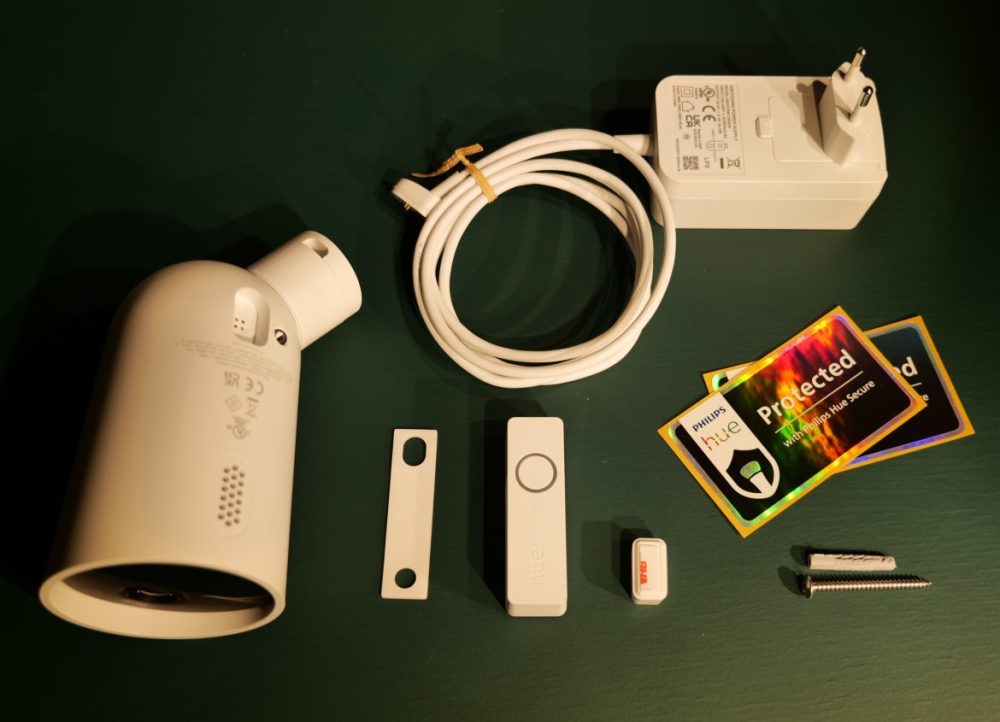
The Bottom Line
We believe that Philips Hue is venturing into new territory with these security products. This is evident in the slightly more complex setup process compared to their lighting products. However, we anticipate further development and improvements in this area.
The pricing structure, particularly the ongoing subscription costs, does not fully align with the product’s features and performance. The initial camera cost of over 2,700 SEK, combined with the recurring subscription fees, raises concerns. Consider a scenario involving four cameras in a larger villa – two for entrance doors and two for balconies. The initial investment would be approximately 11,000 SEK, followed by an annual cost of 1,100 SEK. Numerous alternative security solutions offer superior camera specifications, such as 4K resolution, panning capabilities, and color night vision, at a lower price point and without subscription fees.
However, fewer alternatives provide comparable control over both indoor and outdoor lighting, which is a significant value proposition.
The door sensor, priced at 450 SEK, is a worthwhile investment for automating various functions. While it requires a Philips Hue Bridge, we believe that the bridge is a valuable addition for users seeking seamless smart lighting integration, even without a camera or sensor.
Philips Hue provided review samples for this evaluation. The provision of review materials does not influence our editorial independence, and we maintain an unbiased perspective focused on the needs of our readers and consumers.
